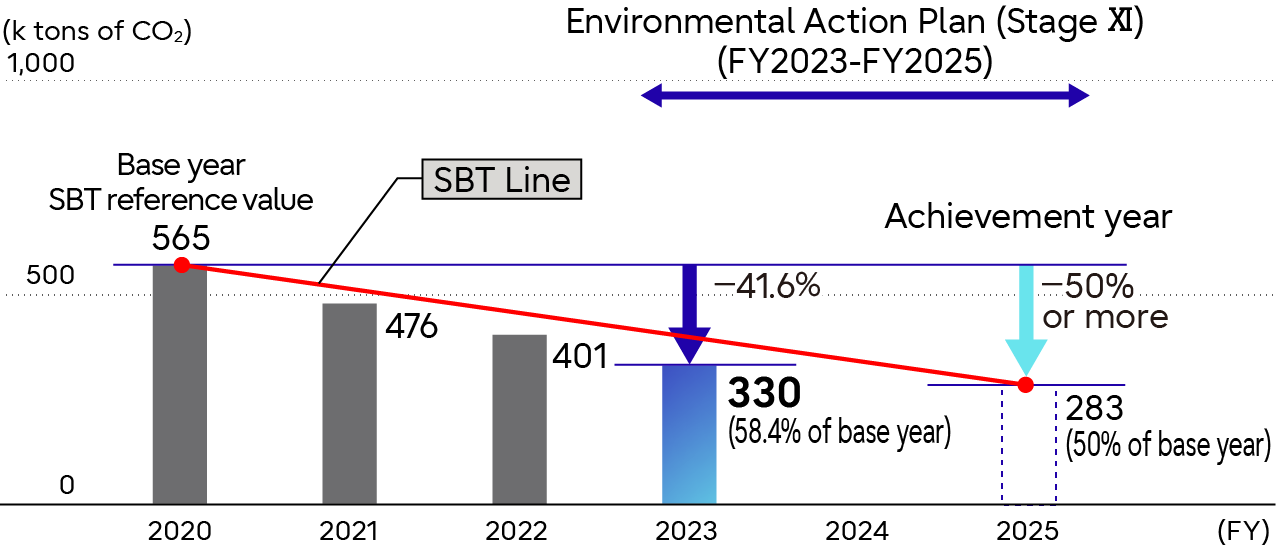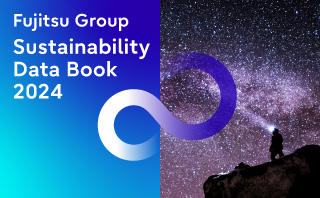-
Sustainability at Fujitsu Group
- Sustainability Management in the Fujitsu Group
- GRB(Global Responsible Business)Goals and Achievments for FY2022
- GRB(Global Responsible Business)Goals for FY2025
- Fujitsu's accessibility
- Stakeholder Engagement
- United Nations Global Compact
- SDG-related Activities in Fujitsu
- External Recognition and Awards
-
Global Responsible Business
- Environment
-
- Environmental Management
- The Fujitsu Group Environmental Vision on Climate Change
- Living in Harmony with Nature (Conservation of Biodiversity)
- Environmental Action Plan
- Environmental Data
- Environmental Communication
- Environmental Social Activities
- Disposal and Recycling of ICT products
- Environmental Considerations in ICT Products
- Governance
-
Data and Documents
- Fujitsu Group Sustainability Data Book 2024
- Social, Governance and Environmental data
- Independent Assurance Report

- GRI Standards / United Nations Global Compact (UNGC) principles Comparison Table
- SASB Standards Comparison Table
- Sustainability Information Disclosure Framework
- Link to regions responsible business reports
- Contact
- Sitemap
Reducing Greenhouse Gas (GHG) Emissions at Our Business Sites
Our Approach
Considering the prevention of global warming an important issue, the Fujitsu Group formulated its medium- to long-term environmental vision, the Fujitsu Climate and Energy Vision, which aims to eliminate all CO2 emissions from our business activities by 2050. However, we have decided to move the target year forward to 2030.
Among GHGs, our business sites (plants and offices, as well as datacenters) primarily emit CO2 when energy (electricity, fuel oil, gas) is used, and perfluorocarbons (PFCs), hydrofluorocarbons (HFCs), sulfur hexafluoride (SF6) during the manufacturing processes and PFCs and HFCs from fluorocarbon leakage. We will set reduction targets in addition to complying with the relevant laws, and we are striving to reduce and control the volume of use and emission of these gases.
Reducing CO2 Emitted During Energy Consumption
About 99% of the Fujitsu Group’s total GHG emissions arise from CO2 emissions due to energy consumption. Therefore, we continuously promote the following energy-saving measures to reduce CO2 emissions.
- Appropriate operation of equipment, improvement in management, and energy-saving measures focused on motive-power facilities (introduction of free cooling, inverters and energy saving equipment, fuel conversion, etc.)
- Increasing efficiency by reviewing the manufacturing process (innovations in production, development of green production technology)
- Maintaining appropriate room temperature for office air conditioning, saving electricity used in lighting and office automation equipment, and switching to LED lighting
- Measuring energy consumption for visualization and promoting use of the data so collected
Reducing Emission of GHGs Other Than CO2
As for GHGs other than CO2, the Fujitsu Group mainly uses perfluorocarbons (PFCs), hydrofluorocarbons (HFCs) and sulfur hexafluoride (SF6) at the manufacturing divisions. We are taking continuous steps to switch to gases with lower global warming potential (GWP) and install equipment to remove harmful gases in our new and existing production lines. We also carry out inspections and maintenance to comply with relevant laws regarding PFCs and HFCs emissions resulting from fluorocarbon leaks from air conditioning equipment.
FY2023 Performance
| Targets under the Fujitsu Group Environmental Action Plan (Stage XI) | FY2023 result |
|---|---|
| Reduce GHG emissions of our business sites to 50% or less of the baes year (FY2020) level. (FY2023 target: 30% reduction) (*1) | 58.4% reduction (*2) |
- (*1)Target organizations: Business sites owned by Fujitsu and the Fujitsu Group. Includes major data centers.
- (*2)Reduction rate based on market standards
Promoting Reduction in CO2 Emitted During Energy Consumption
We continue to invest in energy-saving equipment (introduction and upgrade of BAT (*3) equipment, mainly for air conditioning and lighting) and ensure their appropriate operation at the facilities at all business sites. We are also streamlining our production processes, saving electricity used for air conditioning, lighting and automation in offices, making energy consumption visible, and leveraging measurement data.
For instance, as for lighting equipment investments, we have contributed to the reduction of CO2 emissions by 388 t-CO2 through continuous and efficient deployment of high-efficiency LED lightning. We also improved facility operations (4,775 t- CO2) by reviewing air conditioner operating conditions, such as switching to more efficient equipment, controlling the number of units, and suspending operation of pumps and air conditioning devices. We also use waste heat recovery to generate hot water for air conditioning (380 t-CO2). Through our own efforts, we carried out measures to reduce emissions by roughly 11,000 tons-CO2 (2.7% in comparison to last fiscal year).
As a result of these initiatives, we reduced our GHG emissions according to market standards in keeping with SBT, which is an objective in the Environmental Action Plan (Stage Ⅺ), by 41.6%pt compared to the baseline year (17.7% reduction in comparison to our emissions in FY2022).
- (*3)BAT (Best Available Technologies): Usable state-of-the-art technologies to reduce GHGs.
- (*4)Environmental Action Plan (Stage XI) performance values for the reference year (FY2020) and FY2023 are the total values for business sites targeted by the Environmental Action Plan (Stage X).
- (*5)CO2 conversion factors of purchased electricity are market standards for both the reference year (FY2020) and FY2023 performance values.
Total Emissions of 516 ktons-CO2 in FY2023
Our total GHG emissions in FY2023 were 516 ktons-CO2 (output level per sales amount: 13.7 tons-CO2/100 million yen). They decreased by 5.8% in comparison to FY2022.
- (*6)CO2 emissions in Japan and overseas: The CO2conversion factor for purchased electric power in performance reports has been calculated with a fixed value of: In Japan - 0.570 tons-CO2/MWh from FY 2013 to FY 2015, 0.534 tons-CO2/MWh for FY 2016, 0.518 tons-CO2/MWh for FY 2017, 0.497 tons-CO2/MWh for FY 2018, 0.461 tons-CO2/MWh for 2019, 0.444 tons-CO2/MWh for FY 2020, 0.436 tons-CO2/MWh for FY 2022, and 0.437 tons-CO2 for FY 2023
Overseas – Same coefficients as those used in Japan from FY 2013 to FY 2018, and the latest IEA values (by country ) for the relevant FY from FY 2019 onwards - (*7)Emissions other than CO2: These are converted to equivalent amounts of CO2 using the global warming potential (GWP) for each gas.




